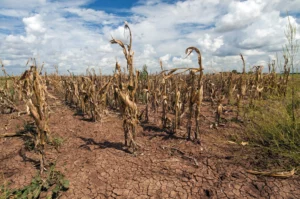Brazil is facing a significant challenge from El Niño, a climate event affecting its economy and inflation battle.
This phenomenon is troubling, especially for agriculture, which makes up a quarter of Brazil’s GDP.
After a strong harvest that boosted growth more than expected, El Niño is now leading to lower economic forecasts for 2024.
Economists are concerned about rising food prices. These increases can influence the Central Bank’s decisions on interest rates.
President Luiz Inácio Lula da Silva, who promised lower prices, now faces political risks due to these economic changes.

Santander Brasil economist Adriano Vallado warns that El Niño is worse than anticipated. He expects January’s inflation to rise, especially for volatile food items.
Current El Niño, milder than 2014–2016, is impacting global economies with Pacific Ocean warming. It’s causing price hikes in commodities like rice and coffee.
Impact of El Niño on South American Economies
In Brazil, inflation, particularly in food and beverages, accelerated unexpectedly in December.
Essentials like potatoes, beans, rice, and fruits are getting more expensive due to harsh weather conditions. A strong El Niño could add 0.8% to inflation over 2023 and 2024.
Diogo Guillen from the Central Bank notes that El Niño has increased inflation forecasts but isn’t a complete game changer.
Peru and Colombia are at greater risk from El Niño, with potential impacts on power, agriculture, and fishing.
In contrast, Argentina might benefit from finding relief from severe droughts. Brazil falls in between these extremes.
El Niño has mixed effects on Brazil’s agriculture. Some areas see improved farming conditions, while others face damaging rains and droughts. These variations affect crucial crops and, in turn, the economy.
In Rio Grande do Sul, floods delayed rice planting, causing prices to surge. December saw nearly a 6% jump in consumer rice costs.
Other crops, like potatoes, also saw price rises due to poor harvests in the south. The cost of potatoes alone rose 19% in December.
Experts predict farming will get more expensive. This includes increased costs for products like flour as bad weather hits wheat crops.
In northern and central Brazil, less rain than usual affects soybean production, the country’s top export. Mato Grosso, a key soy area, had to replant crops, raising costs.
Despite predictions of a weakening El Niño in South America, economic impacts are still unfolding.
Crop disruptions and production issues have led banks like Itaú to lower their 2024 agricultural GDP growth forecasts.
If El Niño remains mild, Brazil’s agricultural sector might not grow in 2024. However, the phenomenon highlights the risk of extreme weather for agriculture-dependent economies.
It suggests weather will play a bigger role in future inflation and economic performance.

